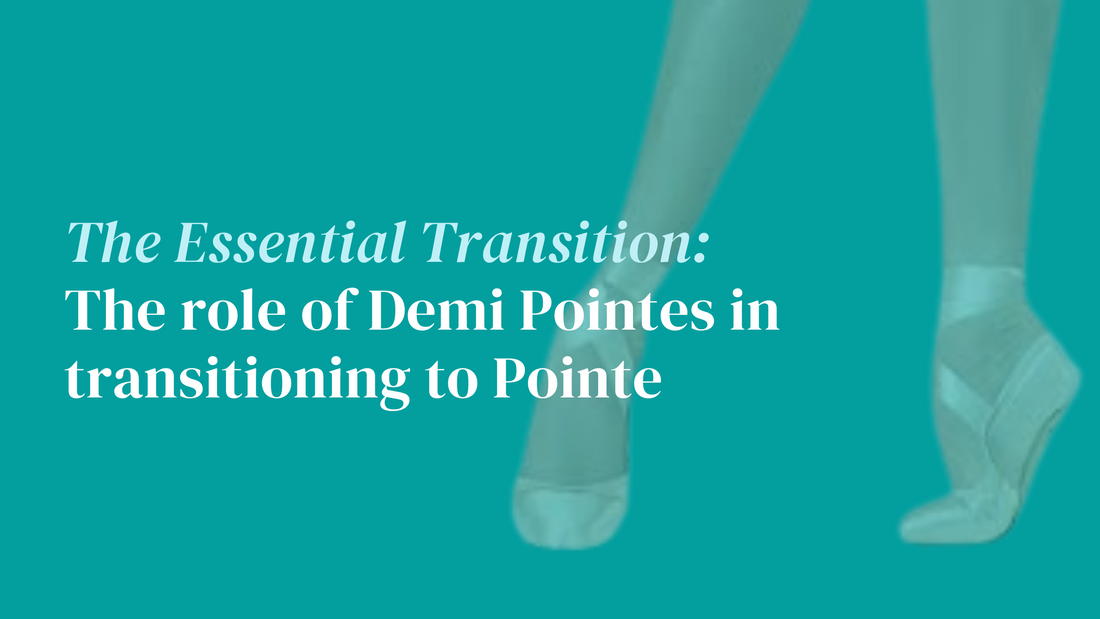For aspiring ballet dancers, the journey to dancing en pointe is a significant milestone. However, this journey isn't merely about putting on a pair of pointe shoes and gracefully dancing across the stage. It requires dedication, strength, and a careful progression to ensure the dancer's safety and success. One crucial step in this progression is the use of demi pointe shoes. In this blog, we'll explore why demi pointe shoes are indispensable in the transition to pointe shoes, and how they play a pivotal role in a dancer's development.
Understanding Demi Pointe Shoes
Before delving into their importance, let's first understand what demi pointe shoes are. Demi pointe shoes, also known as soft blocks or pre-pointe shoes, are similar in appearance to pointe shoes but lack the rigid shank and box found in traditional pointe shoes. Instead, they feature a flexible sole that allows for greater articulation of the foot while still providing some support and resistance.
Crucial Role in Strengthening
One of the primary reasons demi pointe shoes are crucial in progressing to pointe work is their role in strengthening the dancer's feet and ankles. Dancing en pointe requires a tremendous amount of strength in the muscles of the feet, ankles, and legs to support the body's weight while balancing on the toes. Demi pointe shoes help develop this strength by simulating the sensation of being en pointe without the full pressure and risk associated with pointe shoes.
By wearing demi pointe shoes, dancers can gradually build the necessary muscle strength and control needed for pointe work. The flexible sole allows for greater articulation of the foot, encouraging dancers to work through their demi pointe with proper alignment and technique. Over time, this strengthens the intrinsic muscles of the feet and ankles, preparing them for the challenges of dancing in full pointe shoes.
Enhancing Technique and Alignment
In addition to strengthening the feet and ankles, demi pointe shoes also play a vital role in enhancing technique and alignment. Dancing en pointe requires impeccable technique and alignment to prevent injuries and achieve the desired aesthetic quality. Demi pointe shoes provide dancers with an opportunity to focus on proper alignment and technique without the added challenge of balancing on the tips of their toes.
By wearing demi pointe shoes, dancers can refine their alignment, develop a strong releve, and work on transitions between movements with greater ease. This focus on technique and alignment at the demi pointe level lays a solid foundation for transitioning into pointe shoes, where these principles become even more crucial.
Minimizing Risk of Injury
Safety is paramount in ballet, especially when it comes to dancing en pointe. Demi pointe shoes help minimize the risk of injury by allowing dancers to gradually acclimate to the demands of pointe work. The flexible sole of demi pointe shoes provides some support and cushioning, reducing the impact on the feet and ankles during rehearsals and training sessions.
Furthermore, demi pointe shoes serve as a tool for dance instructors to assess a dancer's readiness for pointe work. By observing how dancers handle demi pointe shoes and their ability to maintain proper alignment and control, instructors can determine when they are physically and technically prepared to advance to pointe shoes safely.
In the world of ballet, the transition to dancing en pointe is a significant milestone that requires careful preparation and progression. Demi pointe shoes are indispensable in this journey, serving as a vital stepping stone towards dancing in full pointe shoes. From strengthening the feet and ankles to refining technique and minimizing the risk of injury, demi pointe shoes play a crucial role in a dancer's development, paving the way for graceful and confident performances en pointe.
Shop our range of Demi Pointe Shoes Here.
 is here! Shop now, pay later in 4 easy installments
is here! Shop now, pay later in 4 easy installments
